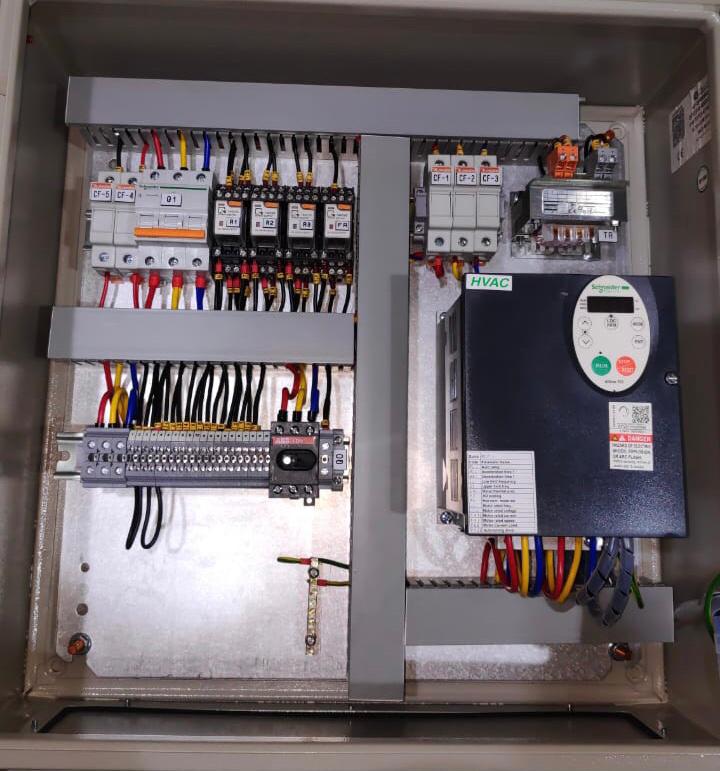
The VFD Panel (Variable Frequency drive panel) also known as VFD Control Panel are designed to control the speed of the electric motor and feed pump. They are widely used in drilling, pumping and other large machine applications like Conveyor and Compressor.
AC motor speed is controlled in two ways – either by controlling the voltage or frequency. Frequency controlling gives better control due to constant flux density than voltage control. This is where the working of VFDs comes to play. It is a power conversion device which converts the fixed voltage, fixed frequency of the input power to the variable voltage, the variable frequency output to control AC induction motors.
Most of the industrial applications require variable speeds at peak load conditions and constant speeds at normal operating conditions. Closed loop working of VFDs maintains the speed of the motor at a constant level, even in case of input and load disturbances.
Why VFDs Panels?
The two main features of VFD are adjustable speeds and soft start/stop capabilities. These two features make VFD’s a powerful controller to control the AC motors.
Benefits Of VFD:
Variable frequency drives not only offer adjustable speeds for accurate and precise control applications, but also have more benefits in terms of process control and conservation of energy. Some of these are given below.
